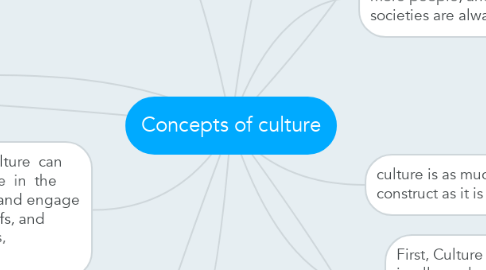
1. The personality is unique personal set of mental programs which he does not share with any other human being. It is based upon traits which are partly learned, which is inherited with the individual’s unique set of genes and partlymodified by the influence of collective programming (culture) as well as unique personal experiences.
1.1. The great majority of our conscious behavior is acquired through learning and interacting with other members of our culture.
2. Culture, Subculture, and Coculture Subculture is also a term sometimes used to refer to racial and ethnic minority groups that share both a common nation-state with other cultures and some aspects of the larger culture.
3. As almost everyone belongs to a number of different groups and categories of people at the same time, people unavoidably carry several layers of mental programming within themselves, corresponding to different levels of culture.
3.1. Culture is socially distributed within a population.
4. it is imperative to delve into the underlying assumptions, which are typically unconscious but which actually determine how group members perceive, think and feel.
4.1. The domain of values can be divided into (1) ultimate, non-debatable, taken-for-granted values, for which the term “assumptions” is more appropriate; and (2) debatable, overt, espoused values, for which the term “values” is more applicable.
4.1.1. Hofstede said that ‘their cultural meaning lies precisely and only in the way these practices are interpreted by the insiders.’
5. Culture is learned, not inherited. It derives from one’s social environment, not from one’s genes.
5.1. Culture should be distinguished from human nature on one side, and from an individual’s personality on the other.
5.1.1. Human nature epresents the universal level in one’s mental software. It is inherited with one’s genes.Our feelings are modified by culture.
6. Individual differences in culture can be observed among people in the degree to which they adopt and engage in the attitudes, values, beliefs, and behaviors that, by consensus, constitute their culture.
6.1. Culture has both universal (etic) and distinctive (emic) elements
6.1.1. When we study cultures for their own sake, we may well focus on emic elements, and when we compare cultures, we have to work with the etic cultural elements.
7. Culture is learned from the people you interact with as you are socialized. Watching how adults react and talk to new babies is an excellent way to see the actual symbolic transmission of culture among people.
7.1. Culture is also taught by the explanations people receive for the natural and human events around them.
8. Culture and Nation In our everyday language, people commonly treat culture and nation as equivalent terms.
8.1. Culture and Race: Race commonly refers to genetic or biologically based similarities among people, which are distinguishable and unique and function to mark or separate groups of people from one another.
8.1.1. Culture and Ethnicity Ethnic group is another term often used interchangeable with culture.
9. culture is a derivative of individual experience, something learned or created by individuals themselves or passed on to them socially by contemporaries or ancestors.
9.1. Culture is a ‘fuzzy’ concept, in that group members are unlikely to share identical sets of attitudes, beliefs and so on, but rather show ‘family resemblances’, with the result that there is no absolute set of features that can distinguish definitively one cultural group from another.
10. culture is as much an individual, psychological construct as it is a social construct.
10.1. Culture is never perfectly shared by individuals in a population (no matter how, sociologically, the population is defined) has to do with the ways in which culture is to be found “in there”, inside the individual.
11. First, Culture referred to special intellectual or artistic endeavors or products, what today we might call “high culture” as opposed to “popular culture”.
11.1. Second, it is referred to a quality possessed by all people in all social groups, who nevertheless could be arrayed on a development continuum from “savagery” through “barbarism” to “civilization”.
11.1.1. For Boas, one should never differentiate high from low culture, and one ought not differentially valorize cultures as savage or civilized.
12. Culture is shared by at least two or more people, and of course real, live societies are always larger than that.
12.1. Any anthropological account of the culture of any society is a type of snapshot view of one particular time.
12.1.1. it is important for the international businessperson to understand that to some degree all cultures are constantly experiencing change. The three basic components of culture (things, ideas, and behavior patterns) can undergo additions, deletions, or modifications.
